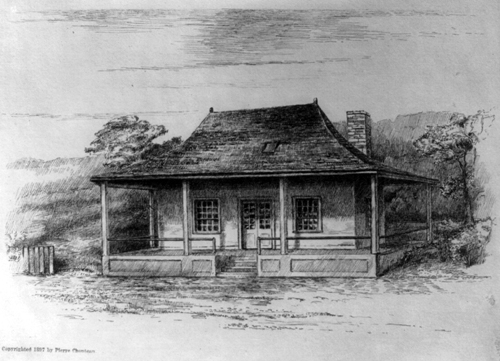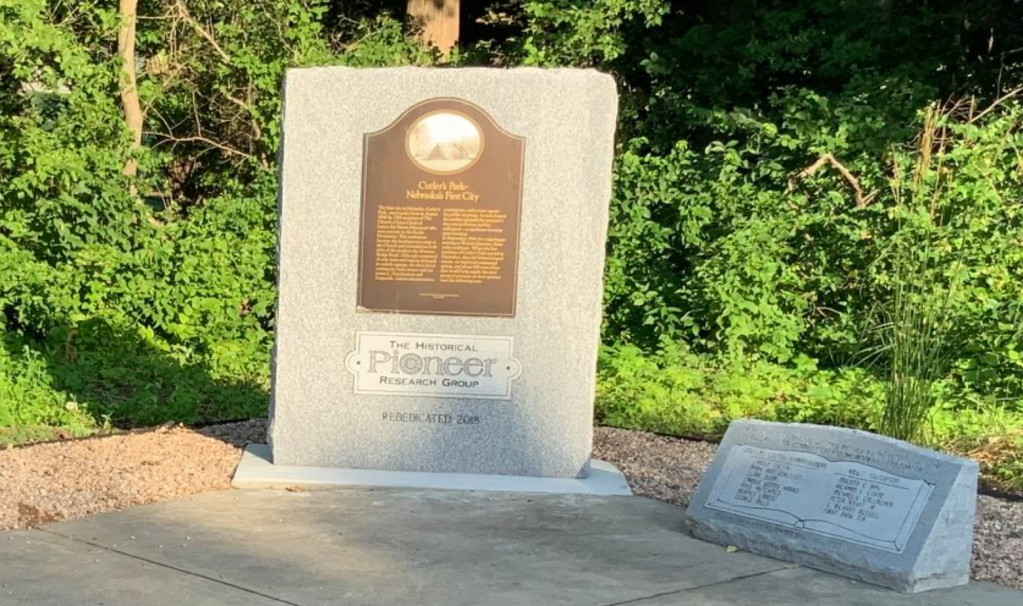Soon after Lewis and Clark plied the waters of the Missouri River for the first time in 1804, a fur trader named Manuel Lisa started a fort at the base of the cliffs near Ponca Creek and what is now known as the Blair Road. He called it Fort Horn, while everyone else called it Fort Lisa.
Origins of Fort Lisa

A Spanish trapper, Lisa was born in New Orleans in 1772. Over the rest of his life he was very influential, starting a powerful fur trading company and helping the US Government take control over the Western United States. One of the ways he did that was by founding his first Nebraska-area post near the Omaha tribe in 1808.
He built a “significant” fur trading post called Fort Lisa in 1812. Surrounded by a large stockade, Fort Lisa became a busy intersection for the half-dozen tribes in the area, as they brought fur pelts to Lisa to trade from across the the Dakotas, Nebraska, Iowa and Missouri. Eventually, in addition to the trading post there was also a blacksmith and sawmill there. At one point Manuel Lisa employed 100 workers at the fort, along with a large steamboat landing on the Missouri River.
Lisa traded in furs, cattle, horses and land. His trading partners were largely the Omaha and Ponca, with occasional visits from the Pawnee, Sioux, Omaha, Ponca, Cheyenne, Mandan, Crow, Ankara, and other tribes. He is credited with promoting the United States during his time, and maintaining peaceful relations between the many Europeans trolling the rivers with the tribes.
Family Life

In addition to a European wife and children in St. Louis, Lisa also had an Omaha wife and two children who lived at Fort Lisa. Her named was Mitain and she was a daughter of Big Elk, the principal chief of the Omaha nation. After his first wife in St. Louis passed away, Lisa returned to Fort Lisa with a new wife named Mary Hempstead Kenney. They tried to bring Manuel Lisa’s two Omaha children back with them to St. Louis, but his Omaha wife wouldn’t allow it. His son with her did get go to school in St. Louis, but died young.
In the summer of 1820, Lisa became deathly ill. His then trading partner, Joshua Pilcher, took him to St. Louis, where he died in August of that year. Fort Lisa was closed and its operations were moved to Bellevue. The fort was used as a general store for at least another twenty years after Manuel Lisa’s death.
The Lost Fort Lisa

Remnants of Fort Lisa have been lost to time, as was its location. For more than two hundred years it has stayed lost, considered by some to be near the old town of Rockport along Deer Creek, while others thought it was south of Ponca Creek by Hummel Park. Some historians place it at the Council Bluff, where Lewis and Clark meant with tribal leaders in 1804. Most have placed it between Cabenne’s Post and the Engineer Cantonment.
In the late 1920s, there was a raging debate in Omaha about where Fort Lisa was, and in the last decade its become a topic again.
Either way, the fort is long gone.
However, the legacy of Manuel Lisa is surely evident. The city of Omaha is clearly focused on business, commerce and money, just like Lisa was. Despite almost being an afterthought to many west Omahans, the Missouri River is gaining importance again today as the downtown region tries to embrace it, just like Manuel Lisa did.
You Might Like…
My Articles About the History of Ponca Hills: Ponca Road | Ponca School | Blue Windows House | Pries Lake | Hummel Park | Cabannè’s Trading Post | Wyman Heights | Fort Lisa | Forgot Store | River Drive | J.J. Pershing Drive
Elsewhere Online
- A. E. Sheldon (est. 1920) “Manuel Lisa,” from History and Stories of Nebraska.
- “Manuel Lisa,” Wikipedia.
- “The Fur Traders: Manuel Lisa” by nebraskastudies.org
- A. E. Shelton (1904) “Fort Lisa” in the Semi-Centennial History of Nebraska






Leave a comment